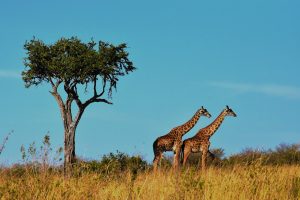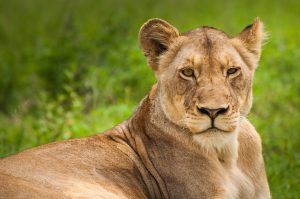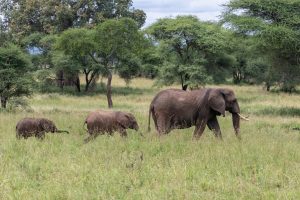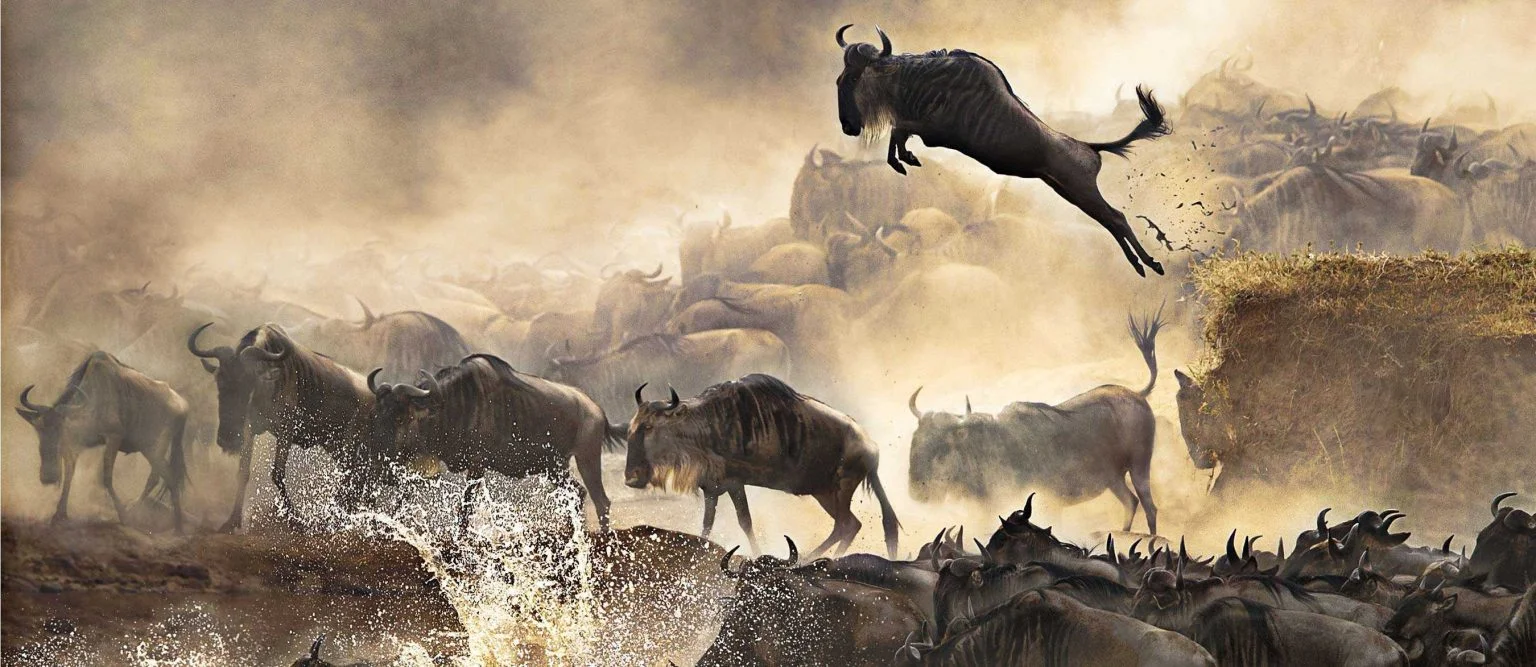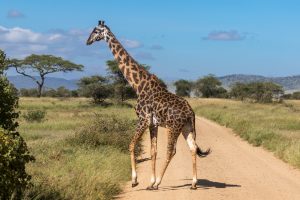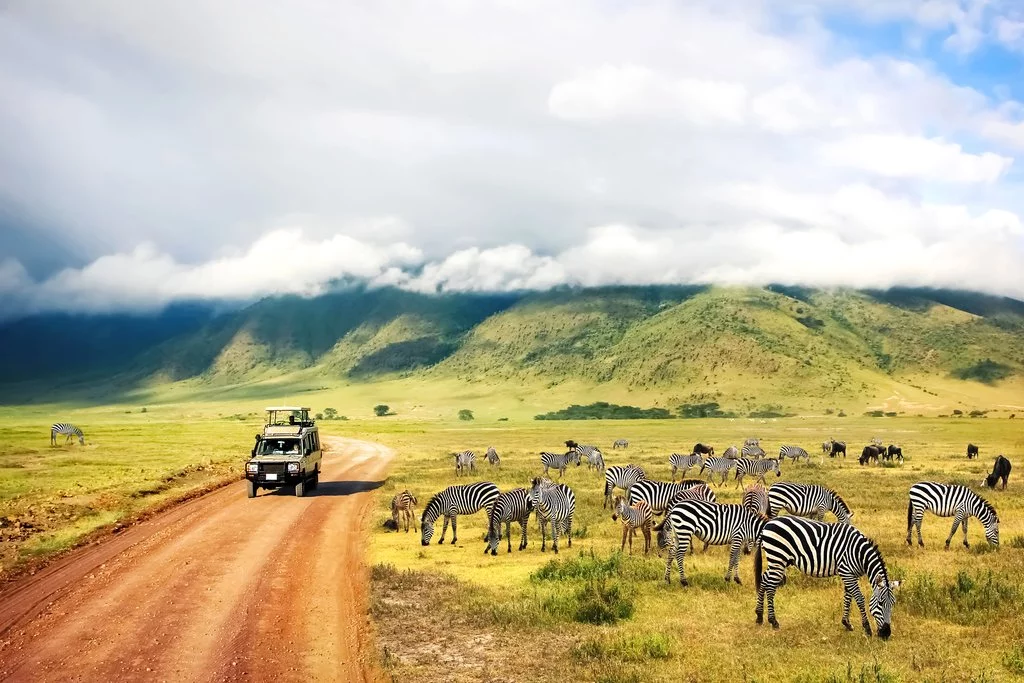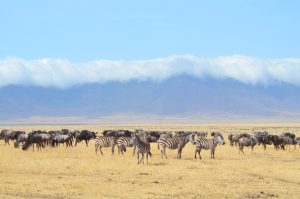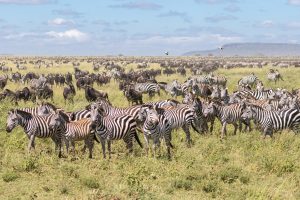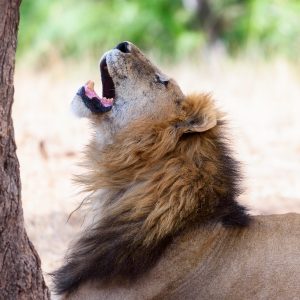Ngorongoro Crater
Explore Ngorongoro Crater, Tanzania
The Ngorongoro Crater, a UNESCO World Heritage Site and a must-visit for any Tanzania safari enthusiast. Sometimes described as an ‘eighth wonder of the world’, the Crater has achieved world renown, attracting an ever-increasing number of visitors each year.
The Ngorongoro Crater is the world’s largest intact volcanic caldera. Forming a spectacular bowl of about 265 square kilometres, with sides up to 600 metres deep; it is home to approximately 30,000 animals at any one time. The Crater rim is over 2,200 metres high and experiences its own climate. From this high vantage point it is possible to make out the tiny shapes of animals making their way around the crater floor far below. Swathes of cloud hang around the rocky rim most days of the year and it’s one of the few places in Tanzania where it can get chilly at night.
History:
The Ngorongoro Conservation Area (NCA) is a unique protected area in the highlands of northern Tanzania. It was established in 1959 as a pioneering experiment in multiple land use where wildlife coexists with semi-nomadic Maasai pastoralists practicing traditional livestock grazing. The area was designated a UNESCO World Heritage Site in 1979, recognizing its outstanding universal value.
Location:
Ngorongoro Conservation Area Authority (NCAA) is situated in the Crater Highlands area of Tanzania, approximately 180 km west of Arusha City. The area spans vast expanses of highland plains, savanna woodlands, and forests. It includes the spectacular Ngorongoro Crater, the world’s largest intact volcanic caldera.
Attractions:
The NCA is home to the iconic Ngorongoro Crater, Olduvai Gorge, and abundant wildlife. The crater itself is a haven for wildlife, including the Big Five. Olduvai Gorge is an archaeological site of great importance, where evidence of early human evolution has been discovered. Other attractions include the Empakai Crater, Nasera Rock, and the vast, untouched landscapes teeming with wildlife.
Activities:
Visitors can engage in various activities such as game drives, walking safaris, and cultural tours. Game drives within the Ngorongoro Crater offer close encounters with a diverse array of wildlife. Walking safaris provide an intimate experience of the landscape and wildlife, while cultural tours offer insights into the lives of the Maasai people.
Accommodation:
The NCAA offers a range of accommodation options, from luxury lodges and tented camps to public campsites. These facilities cater to different preferences and budgets, ensuring that all visitors can find suitable lodging within the conservation area.
Accessibility:
The NCA is accessible by road and air. The nearest international airport is Kilimanjaro International Airport, while local airports include Arusha and Manyara. Within the conservation area, several gates provide entry, including the main Loduare gate, Naabi gate, and Endoro gate.
Best Time to Visit:
Wildlife viewing in the Ngorongoro Crater is excellent year-round. However, the dry season from June to October is considered the best time for wildlife viewing as the grass is shorter, making animal spotting easier. The wet season, from November to May, offers lush scenery and the presence of migratory birds.
The Ngorongoro Conservation Area Authority is a testament to the harmonious coexistence of humans and wildlife. Its rich history, diverse ecosystems, and cultural significance make it a must-visit destination for anyone interested in nature, wildlife, and anthropology. Whether you’re a solo traveler, a family, or part of a larger group, the NCA promises an unforgettable experience filled with adventure, learning, and awe-inspiring moments.
For more detailed information and to plan your visit, you can explore the official NCAA website.
Top Ngorongoro Crater Safari Packages
8-Day Walking safari in the NCAA
8-Day Walking safari in the Ngorongoro Conservation Area Tanzania Parks...
Read More8 Days Wildebeest Migration Luxury Lodge Safari
8-Day Wildebeest Migration Luxury Lodge Safari Tanzania Parks Duration 6...
Read More6-Day Tanzania Standard Safari
6-Day Tanzania Famous Luxury Safari Tanzania Parks Duration 6 Days...
Read More3-Day Luxury Lodges Safaris
3-Day Tanzania Safari, Luxury Lodge Tanzania Parks Duration 3 Days...
Read More5-Day Tanzania Luxury Safari Program
5-Day Tanzania Luxury Safari Program Tanzania Parks Duration 5 Days...
Read More2-Day Ngorongoro Standard Safari
2-Day Ngorongoro Standard Safari 2-Day Ngorongoro Standard Safari Tanzania Parks...
Read More3-Day Serengeti and Ngorongoro Standard Safari
3-Day Serengeti and Ngorongoro Standard Safari Tanzania Parks Duration 3...
Read More5-Day Standard Safari Program in Tanzania
5-Day Standard Safari in Tanzania Tanzania Parks Duration 5 Days...
Read More
